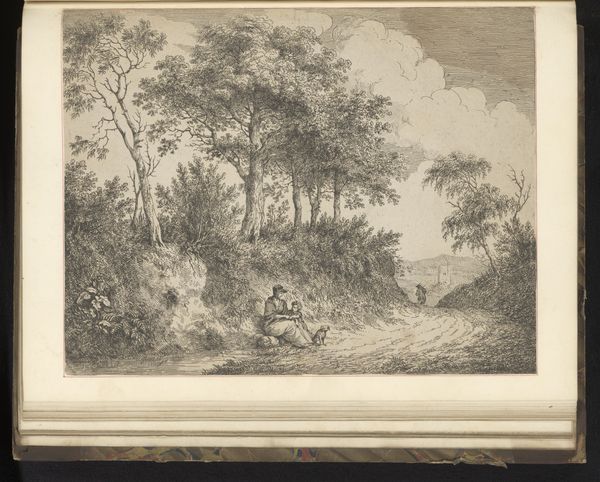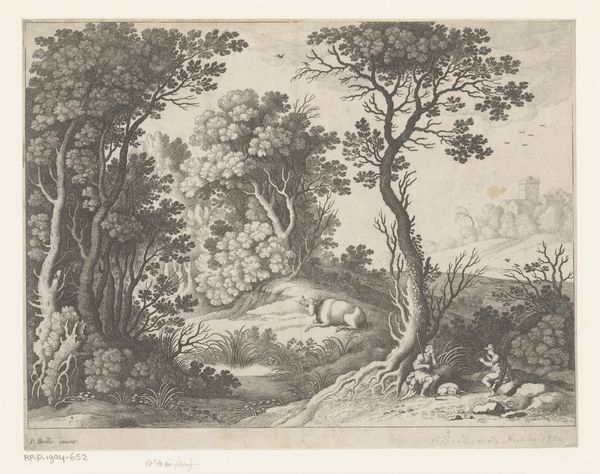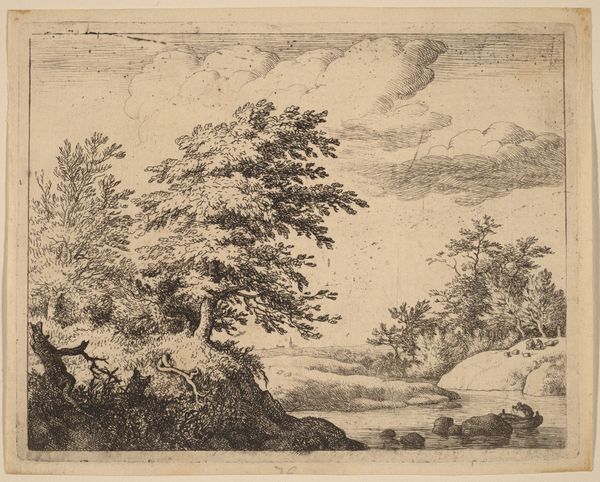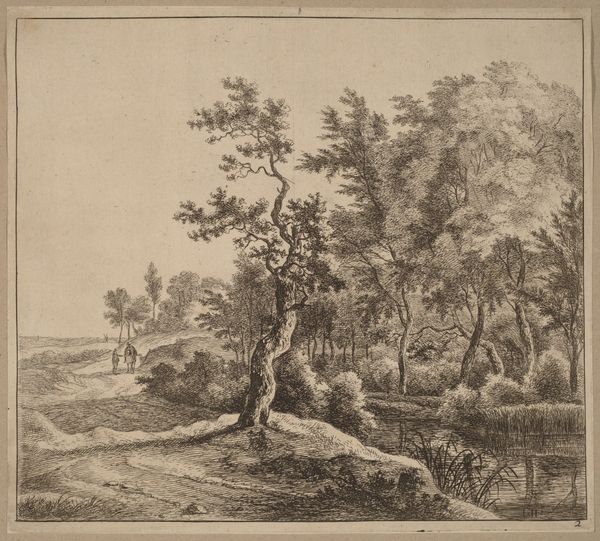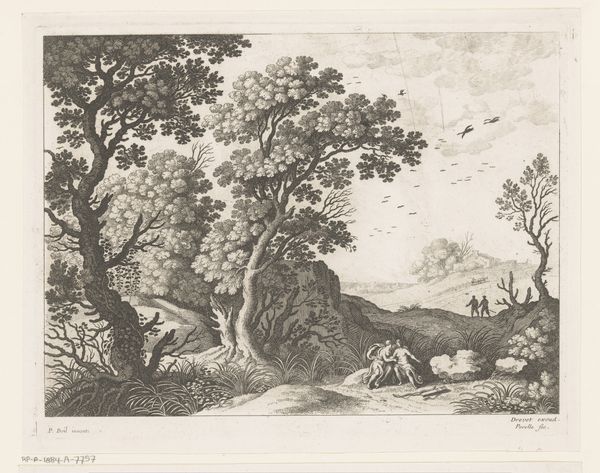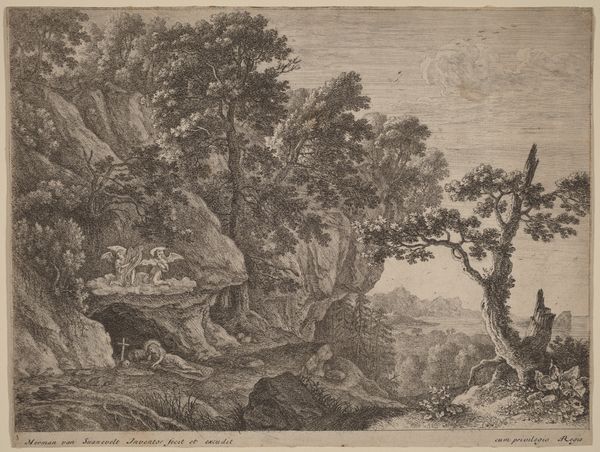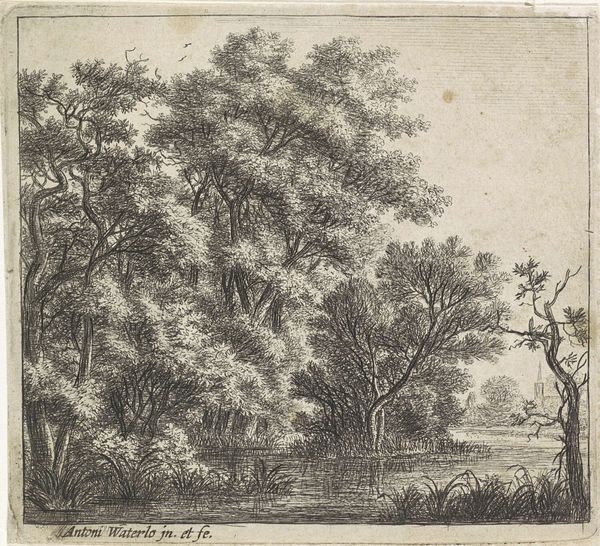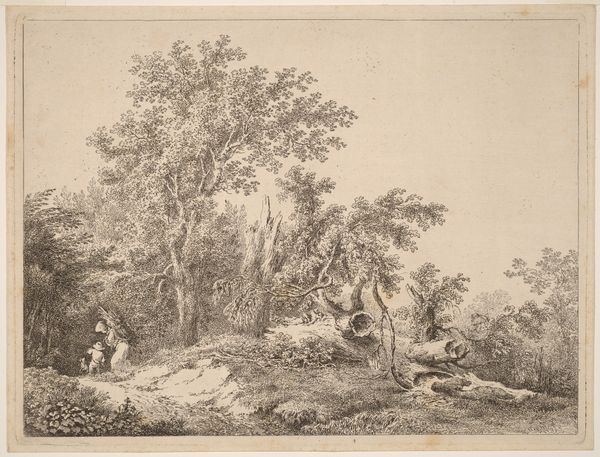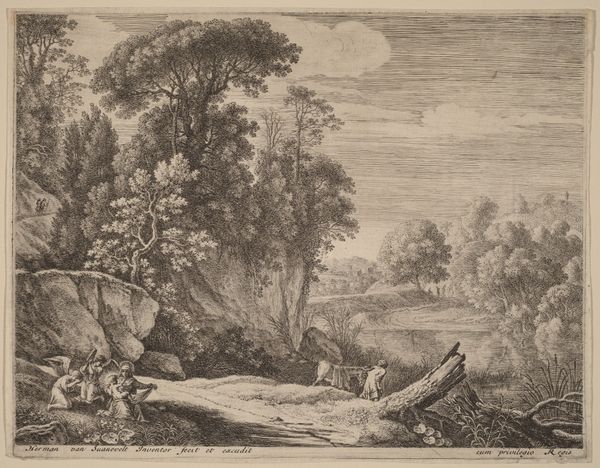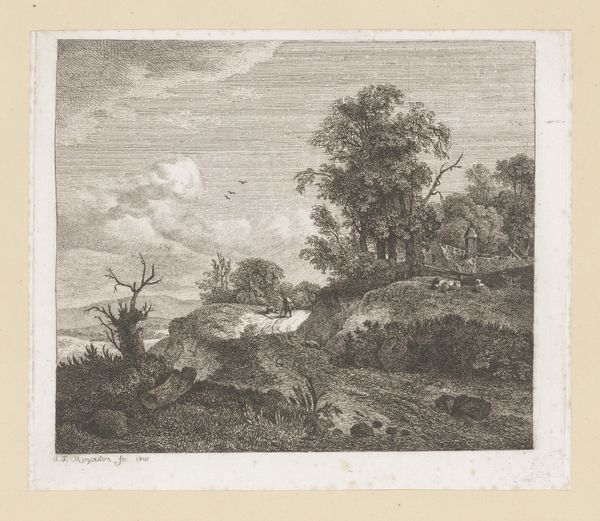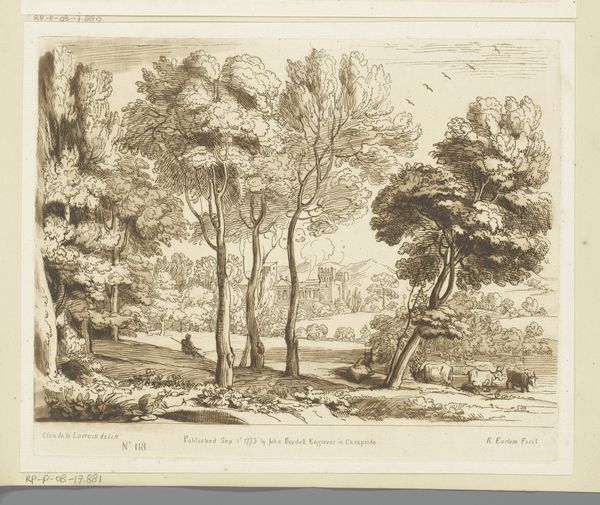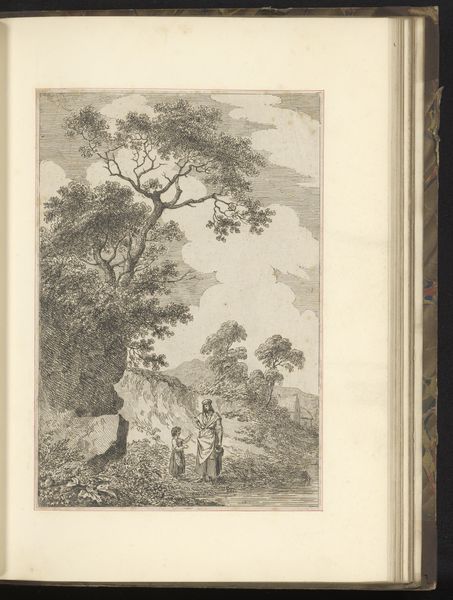
Dimensions: height 219 mm, width 281 mm
Copyright: Rijks Museum: Open Domain
Edward Edwards made this print, "Landschap met een familie", using etching techniques, sometime in the late 18th century. Look closely and you'll see an image built from tiny, precise lines incised into a metal plate. The artist would have painstakingly drawn with a sharp needle through a waxy ground, then bathed the plate in acid. This biting process etches the lines, allowing them to hold ink. When pressed onto paper, the image appears. The etched line has a distinctive quality, unlike a drawn line. Here it creates a sense of meticulous detail. Consider how this contributes to the tranquil atmosphere of the family in nature, a popular theme at the time. The labor-intensive process reflects the value placed on skilled craftsmanship in the 18th century. The printmaking trade had a social context, as prints could be widely distributed, making art more accessible to a broader audience, not just the wealthy. Understanding the making of this print gives us a deeper appreciation of its cultural significance. It's not just an image, but a product of skilled labor, artistic intention, and a specific moment in history.
Comments
No comments
Be the first to comment and join the conversation on the ultimate creative platform.
